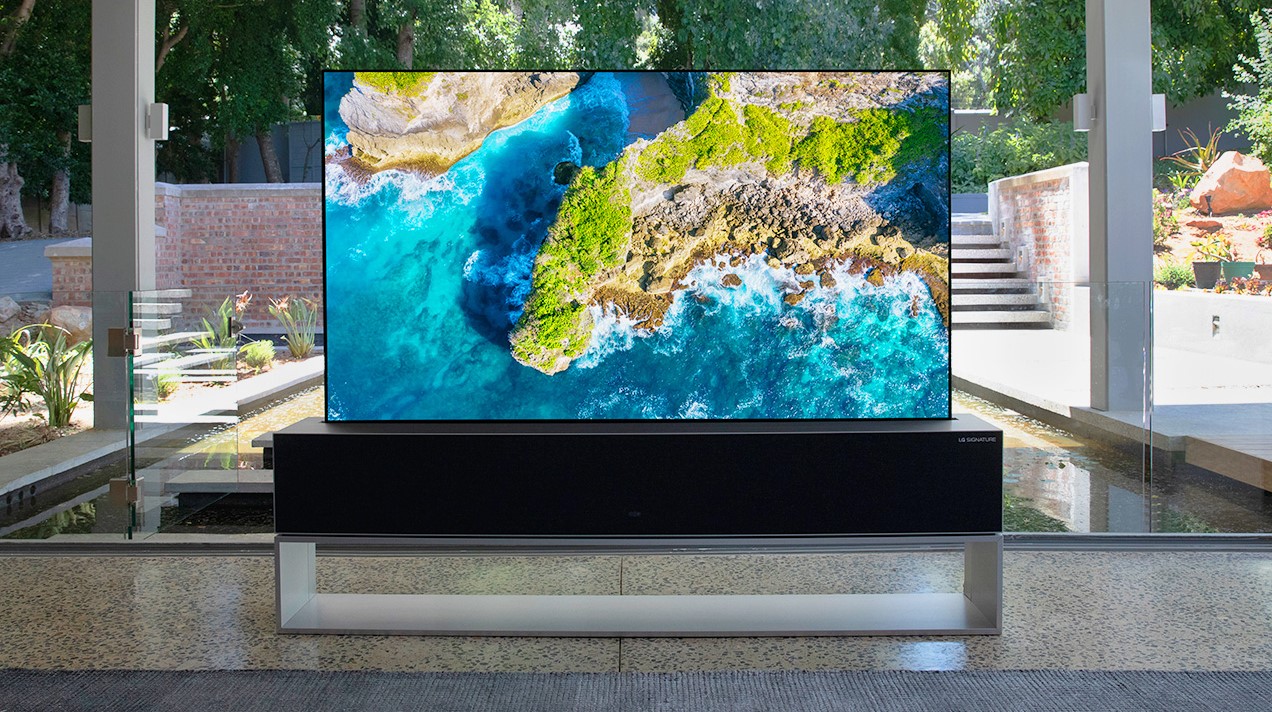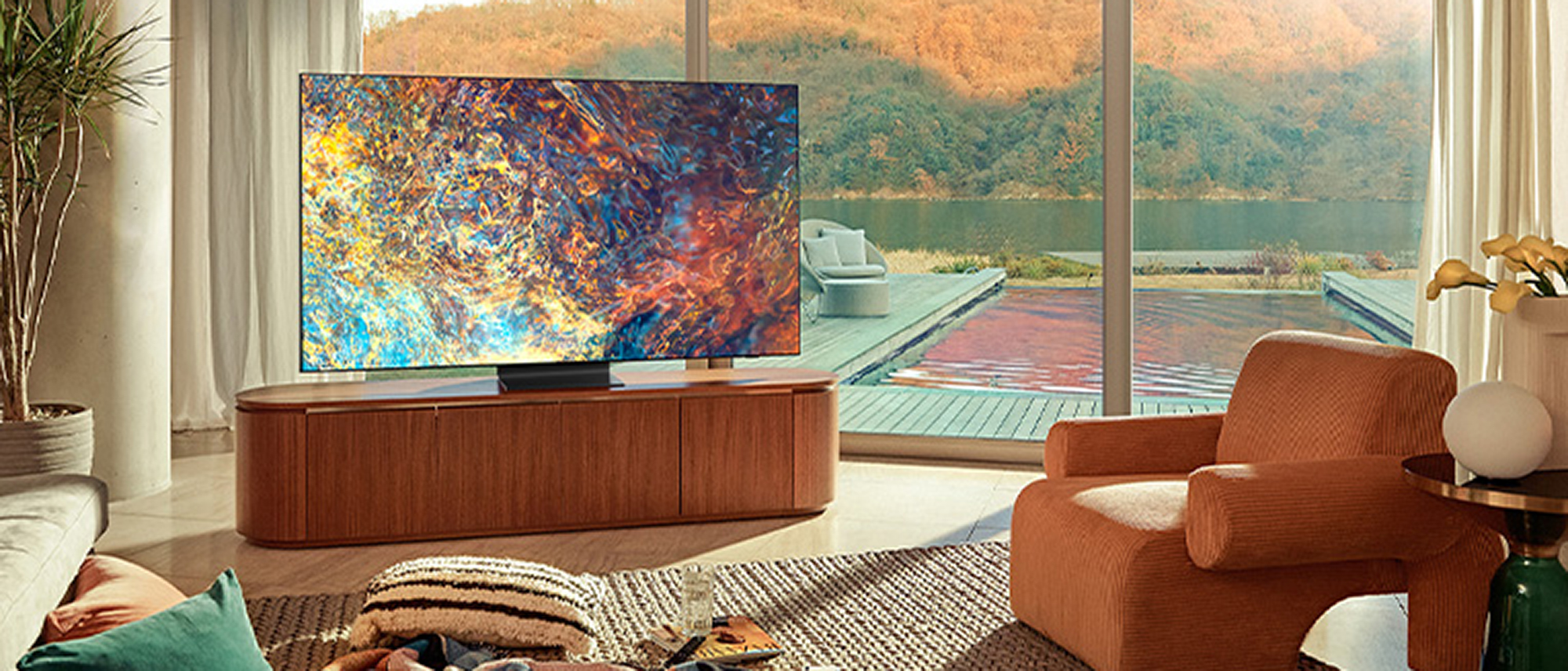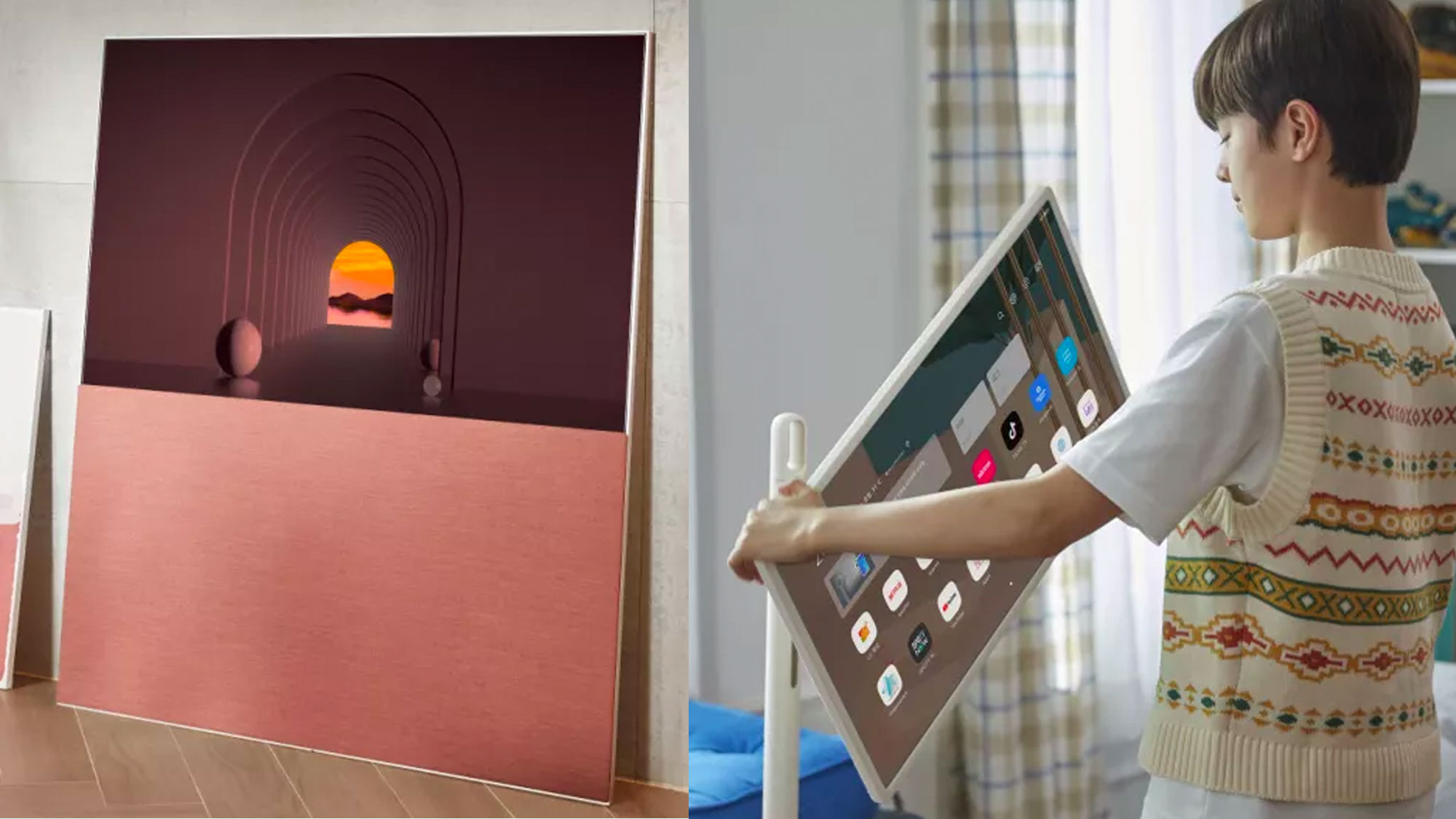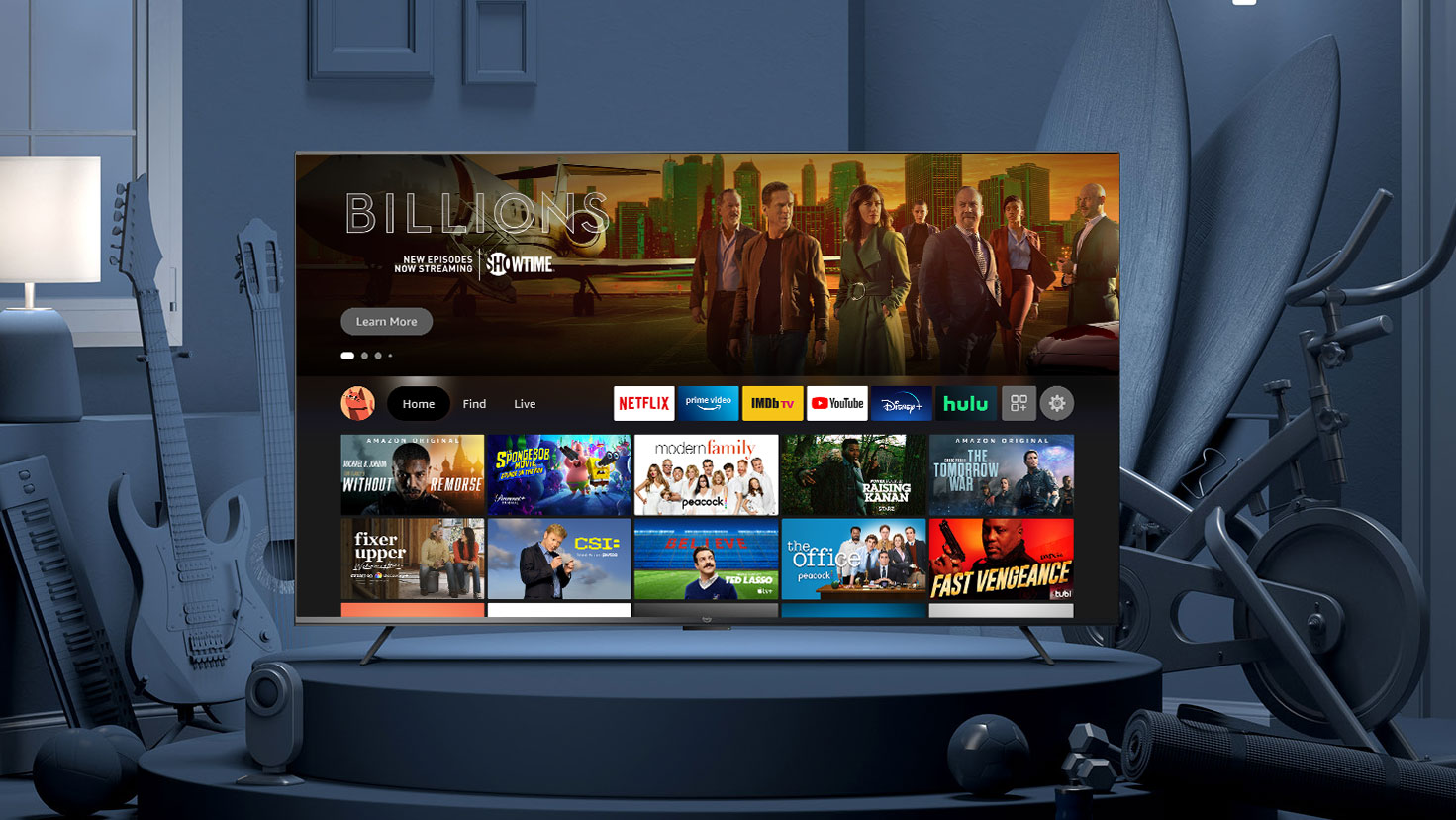Biggest TV trends to watch in 2022
Should you wait for a 2022 TV? Our guess is yes.

The finish line is in sight for 2021, which means one thing for TV enthusiasts – companies are about to unveil a load of new models and features for 2022. Manufacturers like Samsung, LG, Sony, TCL, Vizio and Hisense are all prepping their hottest new models for a big debut at CES the first week of January, and whether it's 4K smart TVs or premium 8K TVs, we can all but guarantee that big things are coming.
Sure, it'll be a few months before you're able to buy any of these new models, but if we're reading the tea leaves properly, there are some big developments brewing for the new year. And some of these upgrades are big enough that you might want to hold off on buying a new TV until you've seen the announcements in January.
Here are the biggest TV trends to watch for in 2022.
TV trends 2022: New display technology

The foundational technology for any TV is the display followed closely by sound, and manufacturers with money to invest in R&D are working overtime to find new ways to deliver better picture and audio quality.
LG has already introduced its OLED evo technology, a generational improvement over standard OLED technology. And even LG's mid-range TVs have benefitted this year from QNED – a combination of enhancements, fusing Nanocell and Quantum Dot with mini-LED backlighting for the best non-OLED sets LG has ever made.
Samsung is also onboard the mini-LED train, with the new backlight technology putting the "Neo" in models the Editor's Choice-winning Samsung QN90A Neo QLED TV. Samsung will definitely be using this tech in 2022 for its best 4K and 8K sets. (And hopefully on more 4K sets, because the lower-end QLED models that use dual-LED were pretty disappointing).
But Samsung is stepping things up again with the likely introduction of QD-OLED, a hybrid technology that pairs the self-emissive qualities of OLED with the better color and brightness of quantum dot, for a new spin on OLED technology that Samsung hopes will break LG's grip on the OLED TV world.
Get instant access to breaking news, the hottest reviews, great deals and helpful tips.
Other big display developments to watch for include a version of LG's Rollable OLED that isn't stupidly expensive, a new HDMI 2.1a standard supporting Source-Based Tone Mapping, a version of Samsung's MicroLED displays that mere mortals can afford, and maybe even an 8K TV that's priced lower than $2,000. Even the best 8K TVs range from pricey to a lot more expensive, so hitting those sorts of normal, accessible prices will be huge for 8K adoption. (Though you still will have trouble finding any 8K content worth watching.)
TV trends 2022: Distinctive Design

In a commoditized product category like TVs, where most sets offer similar capabilities and features with good-enough performance, there aren't a lot of ways to stand out from your competitors. And in the increasingly crowded world of 4K TVs, one way manufacturers are trying to get an edge is by embracing high-end design and positioning TVs as not only premium electronics, but as luxury goods that fit into your lifestyle.
Samsung has staked out some territory in this luxury goods space by offering unique TVs like The Frame, The Serif and the mobile-focused Sero in years past, but LG has offered a new challenge with its own lifestyle TV designs, like the Objet and the StanbyMe, two unique sets that are already selling in Korea, but could make the jump to U.S. markets in the coming year.
TV trends 2022: Remote control possibilities

This year has seen some much needed innovation in remote controls, and I hope that the trend continues in the new year. LG put NFC-pairing tags into its latest Magic Remotes, making it super easy to pair phones to the TV for screen mirroring.
Samsung's solar remote ditched the old paradigm of swappable batteries for a rechargeable battery and integrated solar cell, making a remote that stays topped up just from the light in your living room and keeping potential millions of batteries out of the landfill in the process. Convenient and environmentally conscious? That's a clear win.
And even Roku TVs have seen some innovation on the remote front, with the Roku Voice Remote Pro. It's an easy-to-add remote control upgrade that not only has voice functions, it also has a "find my remote" feature that can make a lost clicker beep or whistle to help you find it when it gets lost behind the couch or thrown away by a "helpful" toddler.
Considering that the remote control is the most hands-on aspect of any modern TV, I'm hoping to see more manufacturers embrace these sorts of innovations. They're small changes, but they go a long way toward making smart TVs feel smarter, and making navigation through increasingly sophisticated software easier.
TV trends 2022: Smarter and chattier TVs

Many TVs, however, are making the remote completely optional, with built-in hands-free voice control. Whether it's the Amazon Omni Fire TV with Alexa or the Sony Bravia XR A80J OLED Google TV with Google Assistant, the addition of room-listening microphones and smart voice assistant technology for opening apps and finding shows is a huge improvement.
Included with these voice assistants are the same smart home capabilities that you can already get through a smart speaker or smart display. And by putting these capabilities into the best display in the house, it's great to see more TV makers touting their sets ability to view connected camera feeds from one of the best video doorbells or best home security cameras, not to mention giving you a dashboard for controlling everything from your smart thermostat to your connected laundry machines and refrigerators.
Local features are also getting smarter, with webcam capability for video calling and even AI-driven workout help. These features are often added as software, and used to enhance the appeal of the latest smart platforms – which are naturally tied to the newest TV models.
But with features like Samsung's work from home functions and Google TV's easy video calling capabilities, they add a lot of usefulness to new TVs that goes well beyond simply streaming shows or gaming with the latest console.
TV trends 2022: What it all means
If our guesses are right, we'll see several new models during CES 2022 that use new technologies, better smart features and sharper designs. But are those improvements worth waiting for if you're already shopping for a new TV?
In some cases, yes. We expect several of the new display technologies to be a major improvement over the current year, with brighter, more vivid pictures and better support for features like HDR and gaming. The best TVs always seem to be just around the corner, but in this case, I think it's smart to wait a month or two, to see what new developments are coming for TVs next year. I suspect that we'll see some very big changes announced soon.
If you're looking to save some money, it's also smart to wait. When the soon-to-be announced TVs start coming to market in February and March, retailers drop prices to their lowest points as they clear out old stock to make room for the new stuff. If you missed Black Friday's awesome TV deals, it will be your best shot at getting this year's best TVs for the lowest prices.
But if your heart is set on nabbing a new TV for Christmas, or maybe picking one up for yourself as a New Year indulgence to offset your new workout goals, then check out some of our favorite TVs, sorted by technology, brand, technology, screen size and features.
Best TVs | Best 4K TVs | Best smart TVs for streaming | Best TVs for gaming
The best TVs under $1000 | The best TVs under $500
Best TV brands | Best Samsung TVs | Best TCL TVs | Best LG TVs | Best Vizio TVs | Best Roku TVs | Best Google TVs | Best OLED TVs | Best QLED TVs | Best 8K TVs | Best HDMI 2.1 TV | Best TVs with ATSC 3.0 | Best TVs with Chromecast
The smallest smart TVs | Best 43-inch TVs | Best 50-inch TVs | Best 55-inch TVs | Best 65-inch TVs | Best 70-inch TVs | Best 75-inch TVs | Best 85-inch TVs
Brian Westover is currently Lead Analyst, PCs and Hardware at PCMag. Until recently, however, he was Senior Editor at Tom's Guide, where he led the site's TV coverage for several years, reviewing scores of sets and writing about everything from 8K to HDR to HDMI 2.1. He also put his computing knowledge to good use by reviewing many PCs and Mac devices, and also led our router and home networking coverage. Prior to joining Tom's Guide, he wrote for TopTenReviews and PCMag.

